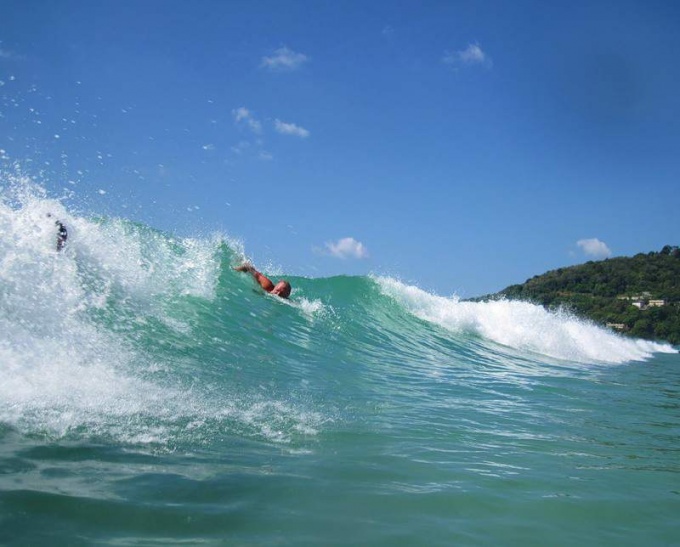To enter the water or go ashore in a heavy swell, wait for the interval between the surf and the reflected wave. Being in the water, select a section of the coast with sandy or pebbly shallows. This site is the safest to exit the water in heavy seas. When approaching to the shore, roll onto your back so that your feet were aimed toward the coast. In other words, have to swim on back, feet first. Don't worry about that in this position, you will slowly sail – surf the wave itself you will put on the beach. But beware that in this situation you are almost not protected, and if the wave will cover you. So perevorachivatel on the back just in front of the beach and not beforehand. Keeping the body afloat, move to the shore hoe-type motions of the hands at the hips. Be prepared to stand feet on the bottom.
Once the wave goes down, lower your legs and stand on the bottom. Immediately after that, begin to move quickly towards the shore with the wave. Watch for the waves. When approaching from the shore of the reflected waves, turn sideways to her, lean to her side, rest your feet and try to stand still. As soon as the reflected wave will continue to go ashore. All the waves increase and fall gradually, so for the safe release hold on the smallest waves.
If the waves are small, quiet swim, climbing and sliding down them. To overcome the large wave advance take a breath, hold your breath and dive under it. If sailing to the shore, you were in a strong tidal wave, don't try to overcome it. Try to roll over on his back feet forward, as described above.
Swimming in big waves, try to swim breaststroke. This style of swimming allows you to swim and tread water in rough seas, providing a good overview. Frequently check the direction of movement, guided by the directions of waves on the shore and visible objects. Breathe in the air away from the approaching wave. To overcome the large opposing waves better crawl on his chest or on his side, in all other cases, swim breaststroke.



